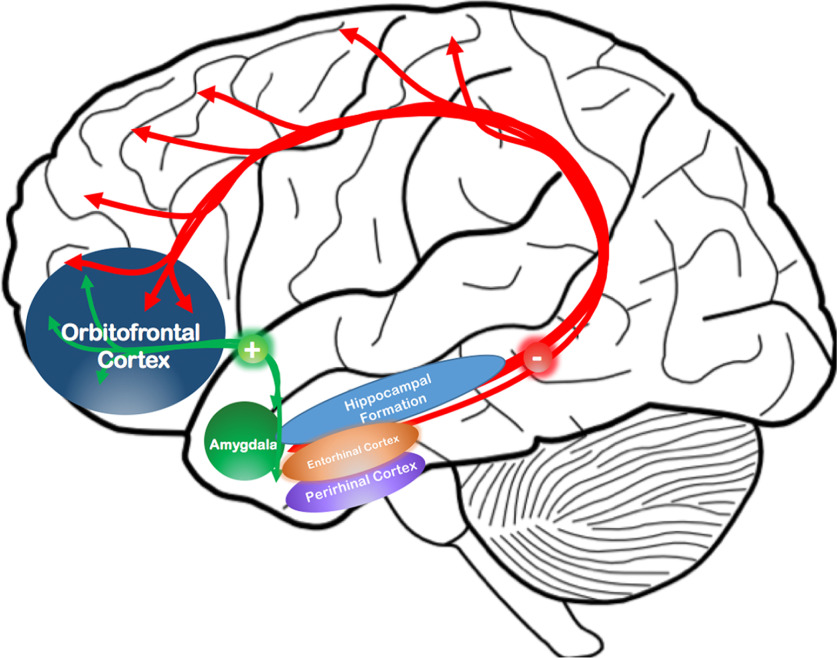Figure 4.
Anterior and posterior MTL–PFC circuits in humans. The circuit schematic summarizes our results demonstrating that (1) the anterior MTL–PFC pathway (i.e., the uncinate fasciculus in green lines), which connects the amygdala and rhinal cortex directly to the orbitofrontal cortex is enhanced in relationship to the increased unpredictability of maternal sensory signals and (2) the posterior MTL–PFC pathway (i.e., the cingulum in red and white), which connects the hippocampus and rhinal cortex with the retrosplenial cortex as well as medial prefrontal and orbitofrontal cortex is not related to the increased unpredictability of maternal sensory signals. These aberrations in circuitry are consistent with a developmental scenario, primarily in female children 9–11 years of age, in which unpredictable maternal sensory signals bias connectivity in favor of the anterior pathway at the expense of the posterior pathway and possibly lead to episodic memory dysfunction.

